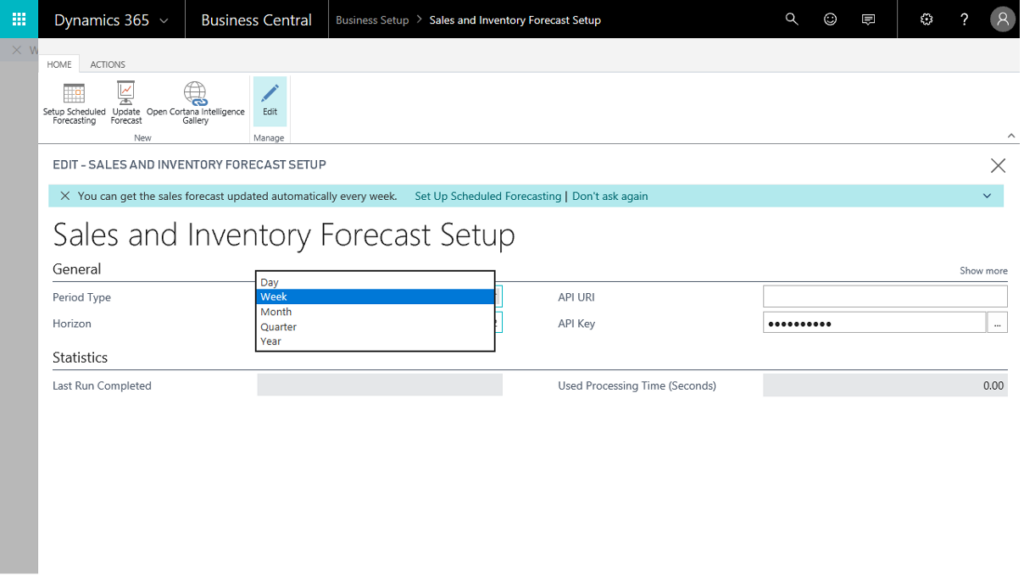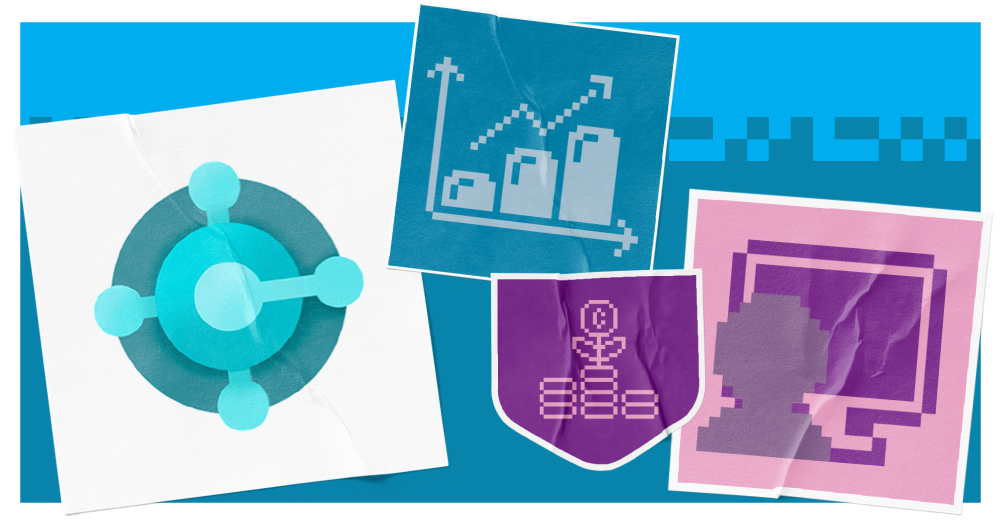Demand planning is a critical process for businesses, especially when many are seeking to be more efficient. While working capital is the financial life blood of the business, this needs to be managed against customer experience. Most businesses no longer have the luxury of overstocking “just in case”. Robust demand planning allows them to accurately anticipate future customer needs and align their supply chain accordingly.
By forecasting demand, businesses can then optimise inventory levels, production schedules and resource allocation. This prevents stockouts, reduces excess inventory and minimises operational costs. In short, it enables you to operate leaner and be more agile while maintaining customer satisfaction and meeting demand.
However, demand planning relies on data visibility. You need to measure data and derive the right insights accurately for reliable predictions that positively impact performance and avoid catastrophe.
Tools that centralise data and automate analysis are crucial for mastering demand planning without excessive effort. And Dynamics 365 Business Central is the market leader when it comes to your enterprise resource planning needs.
We examine how Business Central supports demand planning and the benefits for your business.
What can you achieve with accurate demand planning?
Before we dive into why Business Central is a demand planning powerhouse, let’s explore why accurate demand planning is so crucial to businesses.
We’ve already touched upon the fact that, against new challenges and cost-of-living struggles, many businesses are seeking to operate through lean principles. Issues like excess stock, waste and long lead times can impact profitability and liquidity with rising costs and lost sales opportunities.
When production is aligned with actual demand, businesses can avoid overproduction, underproduction and unnecessary rework, all of which contribute to leaner operations. This helps you to control costs, spending only what you need.
On top of this, demand planning can enable you to drive customer satisfaction. By ensuring you have the right stock at the right time, you can ensure customers never face stockout situations which send them to your competitors. This will also enable you to attract more sales to boost revenue.
You’ll also be able to fulfil orders smoothly and without delay, which will improve your reputation as a provider.
Demand planning can impact your wider business strategy. It enables you to make informed decisions about product development, marketing strategies and pricing. By understanding future demand trends, you can identify opportunities for growth and adjust their offerings to meet evolving customer preferences. This agility is crucial in today’s fast-paced markets, where consumer tastes and preferences can change rapidly.
Finally, demand planning plays a vital role in supply chain resilience. By anticipating potential disruptions, such as natural disasters or supply chain bottlenecks, businesses can take proactive measures to mitigate their impact. This helps maintain a steady flow of goods and services, even in challenging circumstances, so you don’t feel the personal hit.
What are the common challenges of demand planning?
If demand planning were easy, every business would already be doing it right. However, as with most things, it comes with specific challenges businesses need to overcome. These include:
- Data quality: Many businesses find themselves suffering from inconsistent or incomplete data, which makes it difficult to come to accurate conclusions
- Data availability: Data scattered across different departments hinders a comprehensive view of demand. A lack of real-time data can also make it hard to implement timely forecasts and adjustments
- Forecasting complexity: Fluctuating demand, the impact of external factors (like economic conditions and unforeseen events) can be difficult to forecast accurately. You will also need to factor in product stages (such as growth and maturity), which introduces more complexity
- Organisational challenges: You need a unified approach to demand planning. Disagreements or lack of collaboration, alongside resistance to change, can prevent this
- Insufficient resources: Limited budget and staffing can constrain the time businesses have available for demand planning and reporting
- Data integration challenges: Integrating data from multiple sources across your business can be time-consuming and error-prone, especially if it is not done properly
- Limited technological infrastructure: Outdated systems can hinder the adoption of modern forecasting tools and often do not leverage updated technology that simplifies planning
Fortunately, Business Central allows you to overcome these challenges.
How can Business Central help with demand planning_
Business Central has a host of features that can allow you to perfect demand planning and do it consistently. It covers four core areas:
- Anticipate future demand
- Optimise inventory levels
- Improve production planning
- Enhance customer satisfaction
Let’s dive into the specific demand planning features within Business Central.
Sales and production forecasts_
Business Central allows you to create both sales and production forecasts, using historical data and AI-powered predictive modelling. Sales forecasts predict future sales, while production forecasts help plan the manufacturing of goods to meet these sales. You can define forecasting periods (daily, weekly, monthly, etc) which helps in planning and adjusting to market demands over different time frames.

image courtesy of Microsoft
On top of this, you can utilise component forecasts, which track the demand for individual components, which is particularly useful for managing inventory and ensuring that all necessary parts are available for production.
You can also create forecasts specific to different locations, which helps in managing inventory and production across multiple sites. This ensures that each location has the right amount of stock to meet local demand.
The forecasting functionality allows you to create “what if” scenarios to explore different demand situations and plan accordingly. This can help in making informed decisions and preparing for various market conditions.
Adjust forecasts in real-time_
Business Central also features a Master Production Schedule (MPS) which is a detailed plan of what needs to be produced, in what quantities and when.
During the creation of the Master Production Schedule (MPS), Business Central nets the forecast against actual sales and production orders. This helps in adjusting the forecast based on real-time data, ensuring more accurate planning.
Get smart suggestions_
Business Central balances supply and demand by considering all types of demand (sales orders, service orders, production orders, etc) and supply (inventory, purchase orders, production orders).
It then creates suggestions to balance supply with demand, ensuring efficient inventory management. Examples include reminders to order stock or potential item substitutions for missing items.
Centralise data_
Business Central centralises data from various sources, including sales orders, purchase orders, inventory levels and production orders, into a single platform. This consolidated data provides a comprehensive view of demand and supply, enabling more accurate demand planning.
The system integrates with other modules like sales and marketing, allowing for a seamless flow of customer data, sales orders and marketing campaigns into the demand planning process. This ensures that the demand forecasts are aligned with the latest customer trends and market dynamics.
By centralising data and integrating with other modules, Business Central enables businesses to make informed decisions about production planning, inventory management and resource allocation.
Customisation options_
If for any reason the in-built AI in Business Central doesn’t suit your needs, you can create and use your own predictive web services. This allows for greater customisation and accuracy in forecasting.
Power BI integration also enables you to visualise your data and bring it to life, for easier understanding across the business.
On top of this, Business Central offers advanced customisation and extension, alongside integrations with other department through the Dynamics 365’s multiple modules and third-party tools. This allows you to tailor the demand planning process to your specific needs, while ensuring a holistic view of demand and supply.
If your requirements exceed the core functionality, with the need to factor in seasonality, external factors or supply chain disruptions, Business Central can be extended with the use of apps via Microsoft’s AppSource. An example of this is AGR, a data integrator app that enables you to streamline your inventory, boost productivity and reduce waste in the supply chain.
What else can Business Central do?
By leveraging the capabilities in Business Central, you can perfect the art of demand planning and simplify the process. This will enable you to more accurately predict order levels, so you can better manage inventory and allocate resources.
Doing so will enable you to control costs, operate more efficiently and respond proactively to evolving trends. Essentially, it’ll give you the tools you need to protect profitability and tackle modern business obstacles head-on.
It isn’t just demand planning that Business Central can help you with. As a leading ERP system, utilising cutting-edge technology like AI and automation, it can improve management and performance across core business areas, including finance, supply chain and project delivery.
Find out more about Business Central’s capabilities in our video below:
And if you want to learn how to get even more from Business Central, our Unlocking the power of Microsoft Business Applications will help you do exactly that.
Join us in Birmingham on 20th March to explore Dynamics 365 and Power Platform, understand how to unlock greater value from your Business Applications and gain insight into Microsoft’s continued investment in AI and automation. Tailored workshops throughout the day will ensure you gain relevant expertise for your business.




